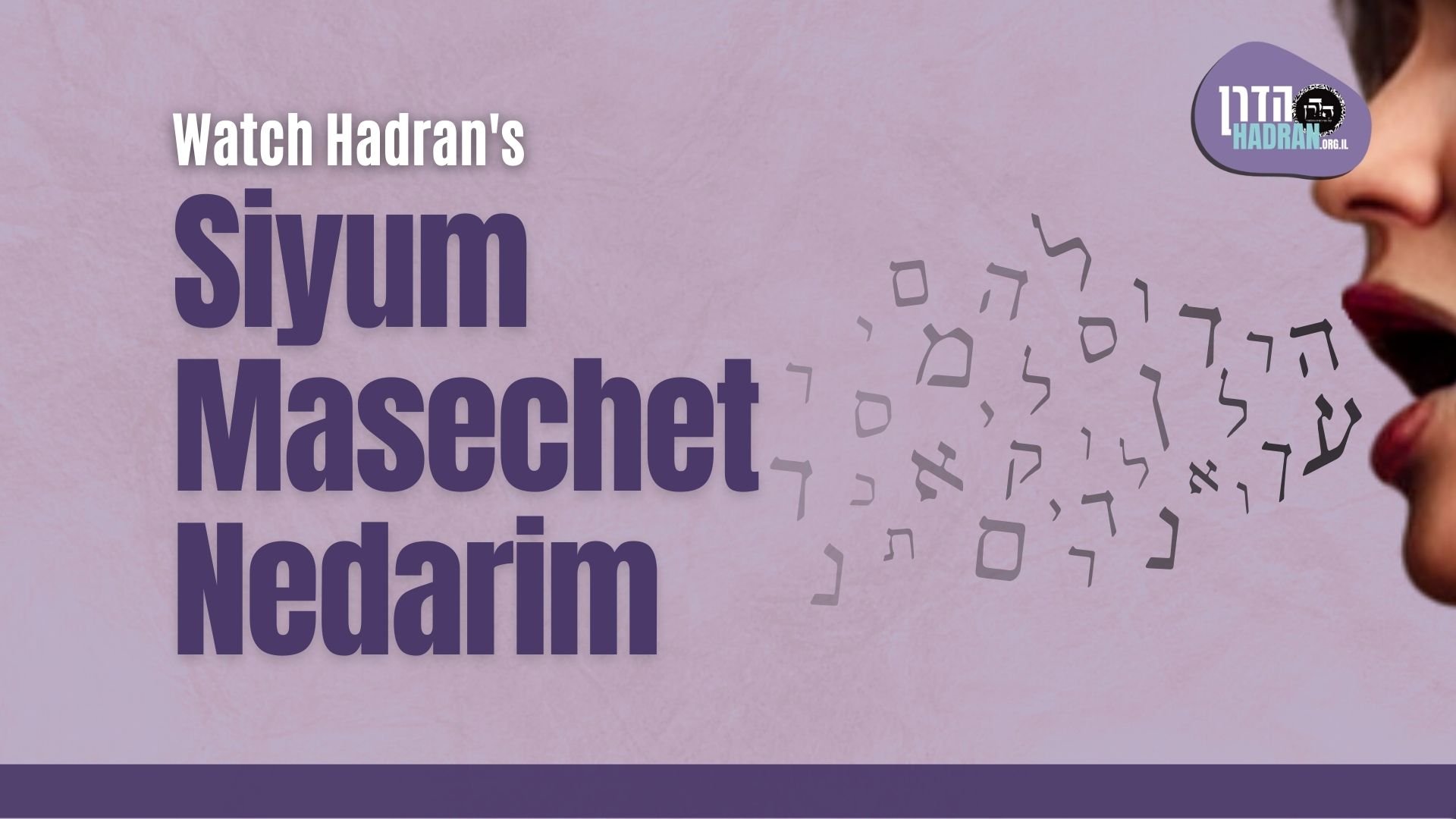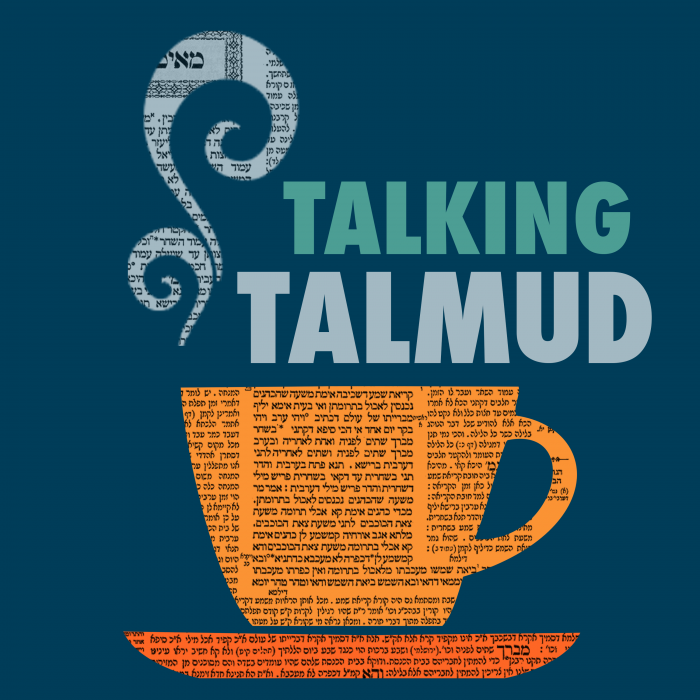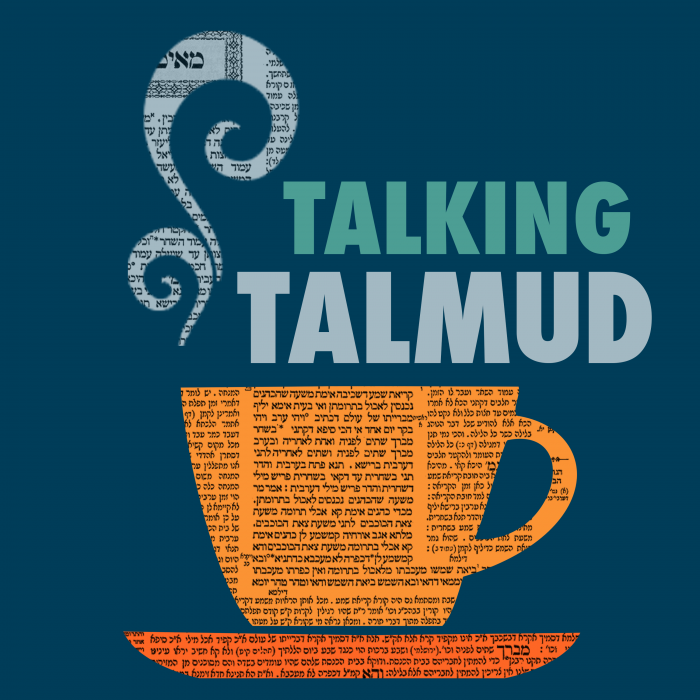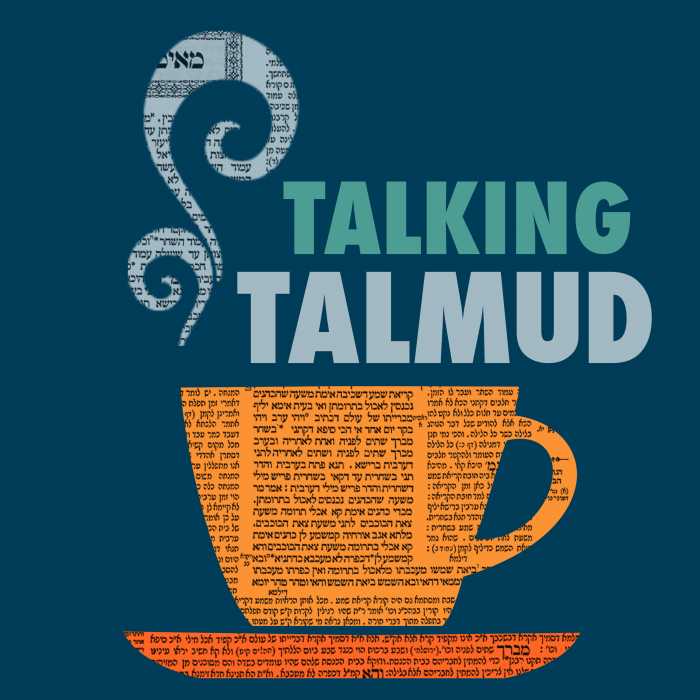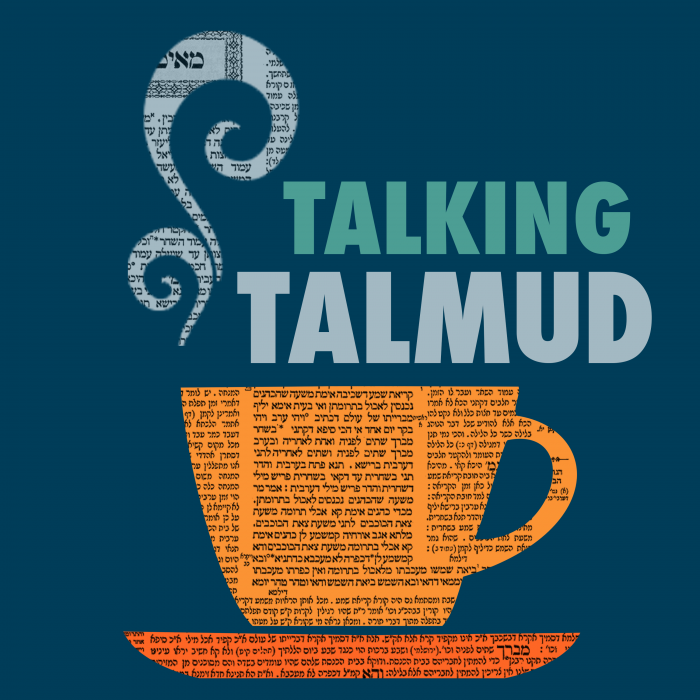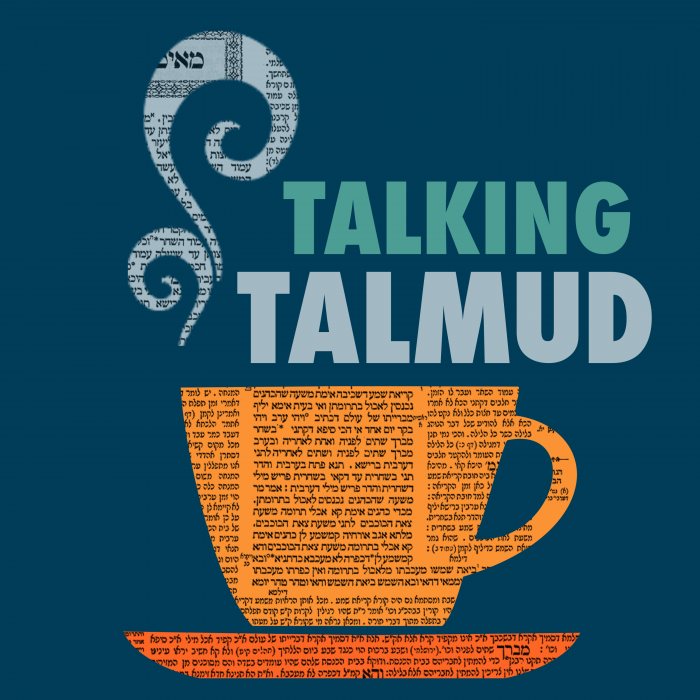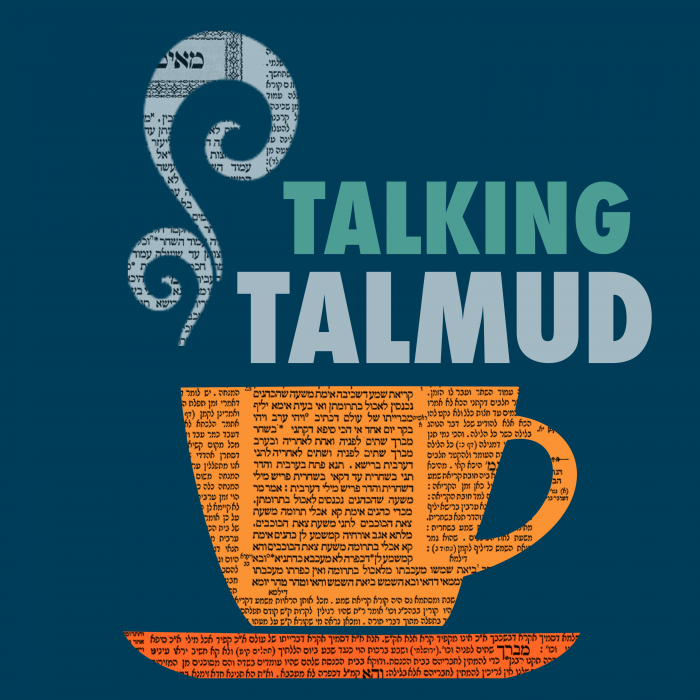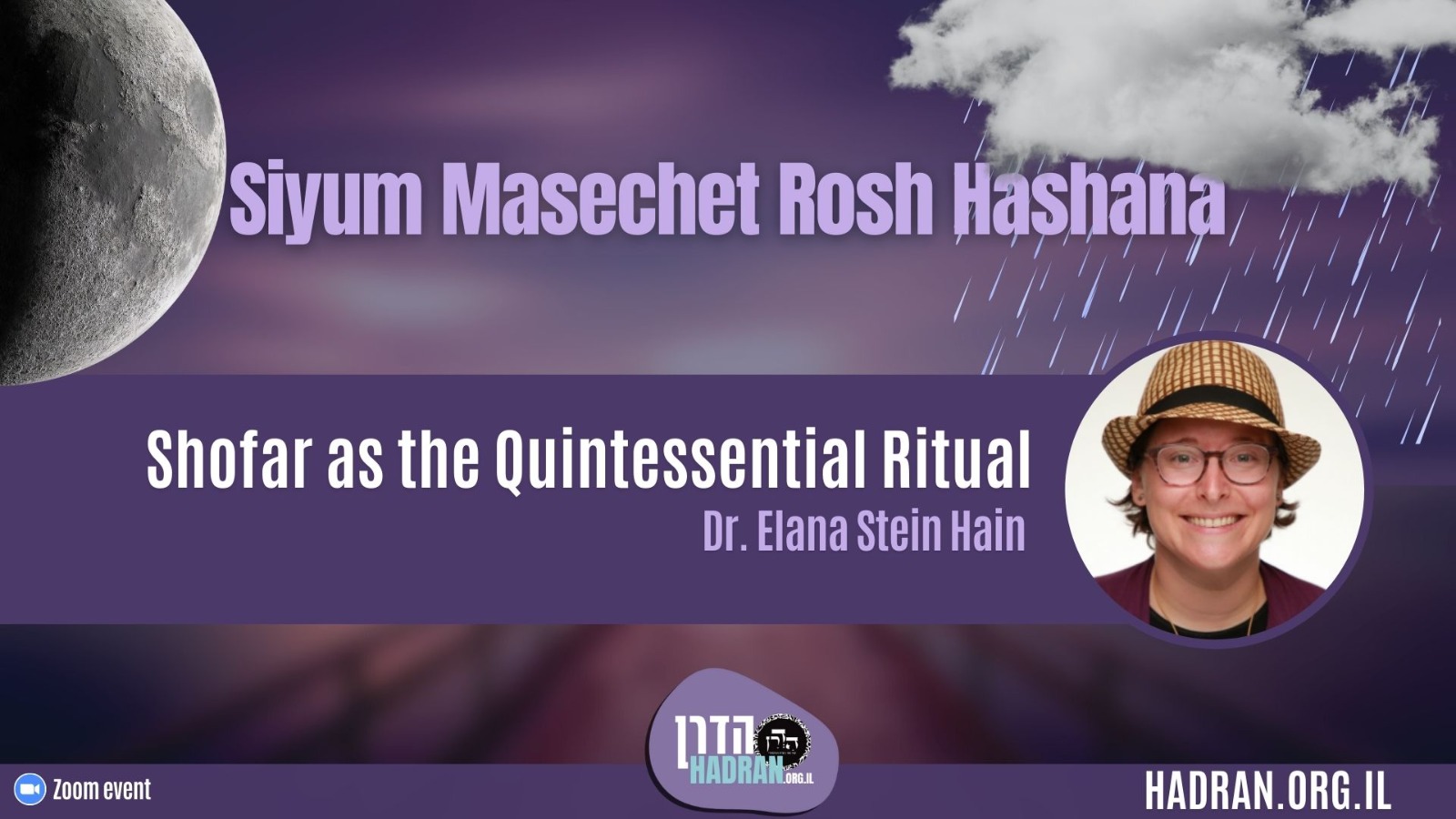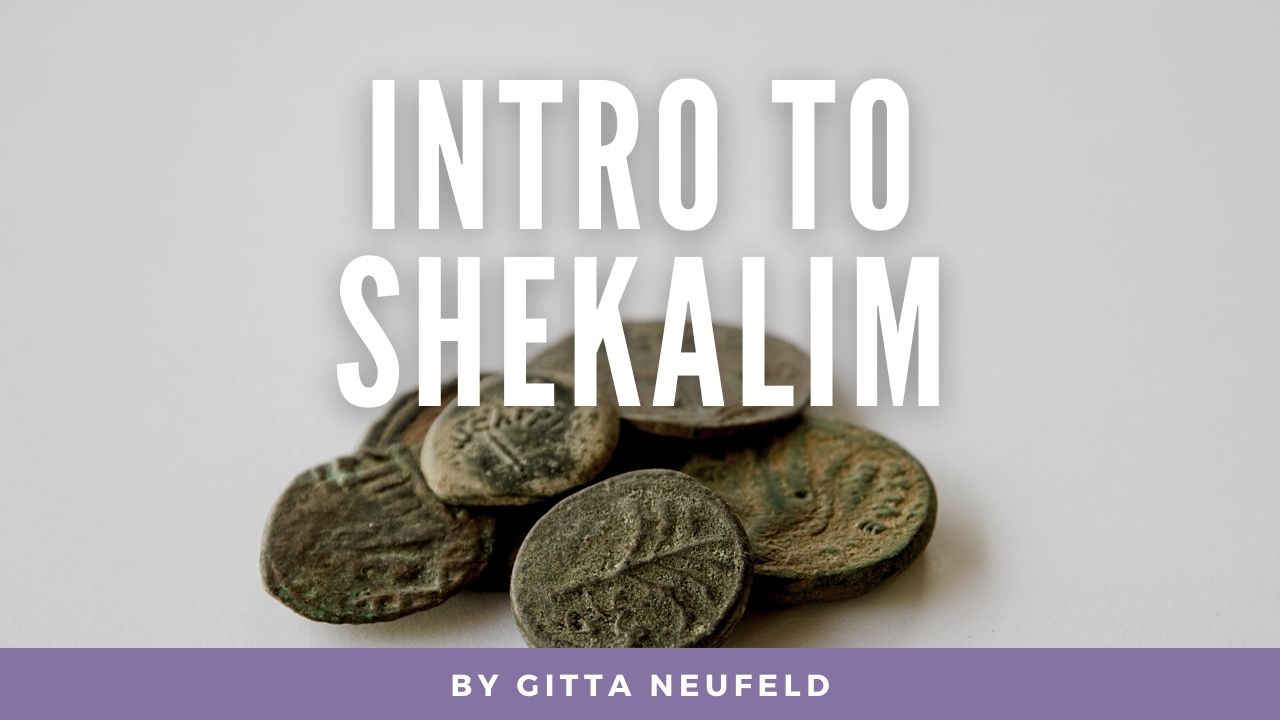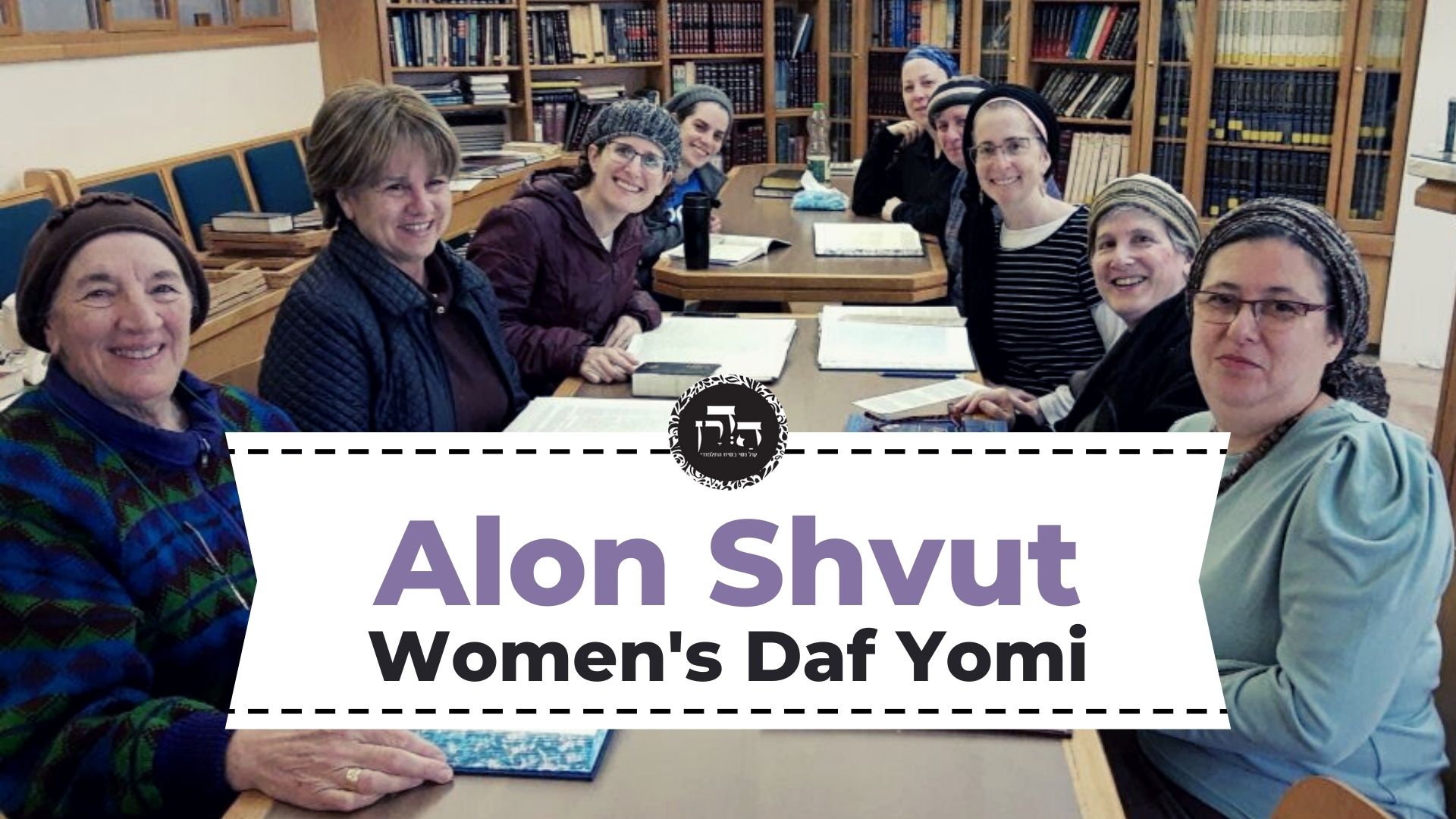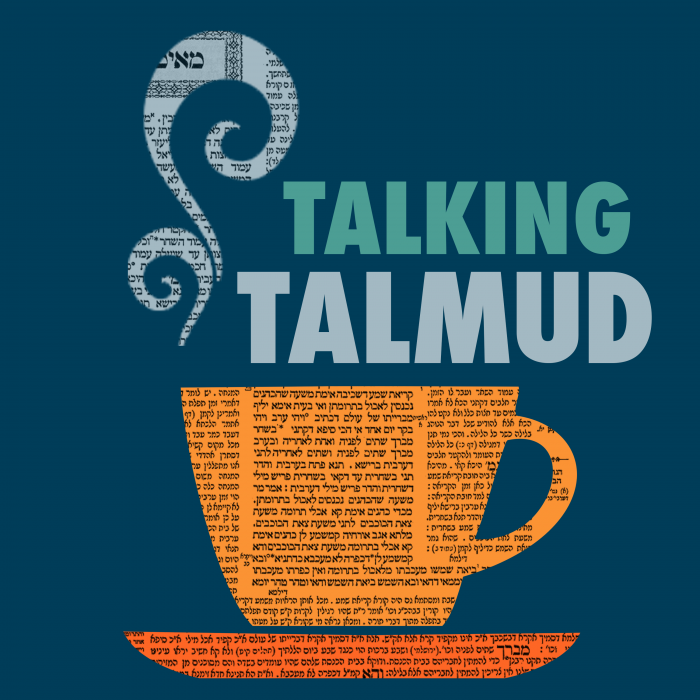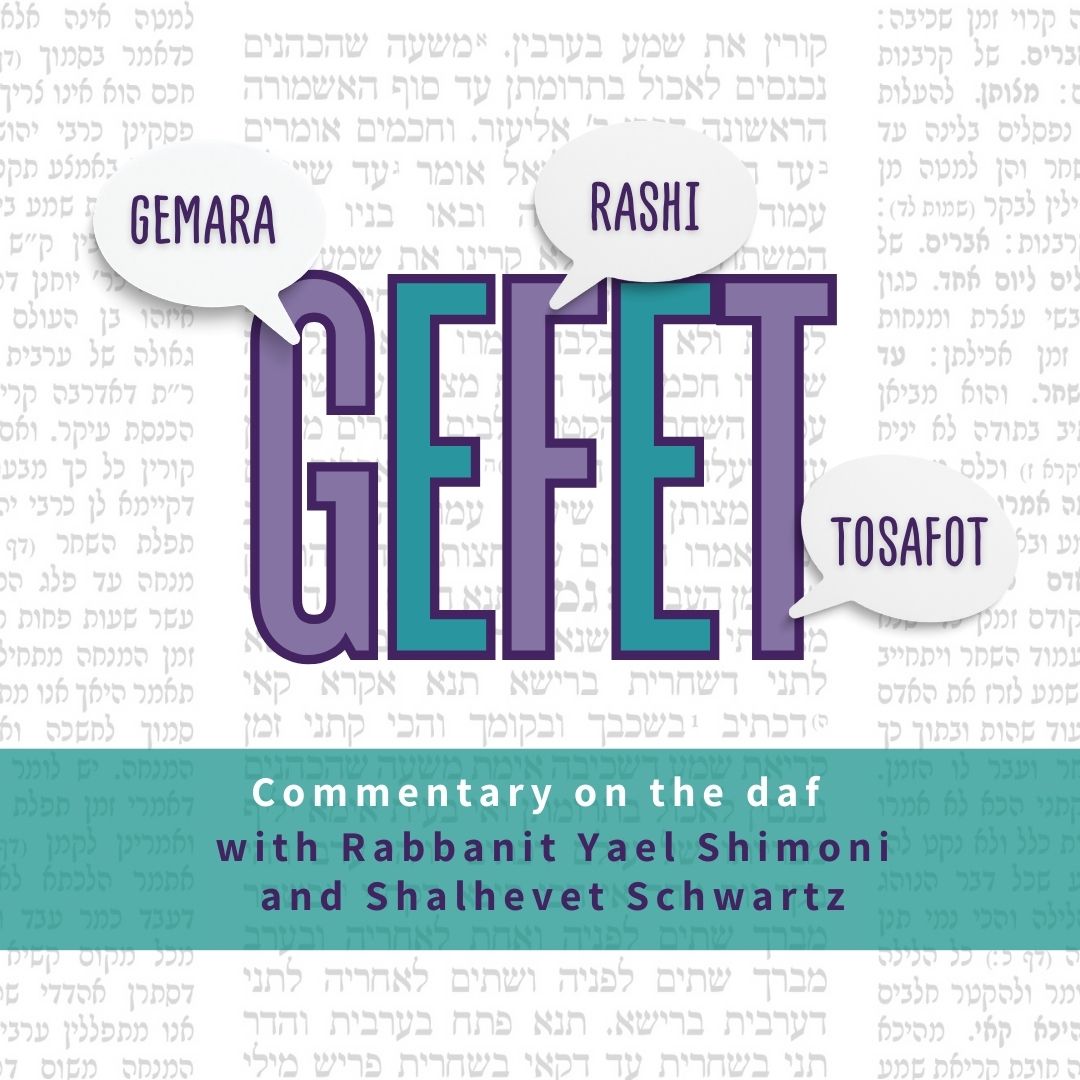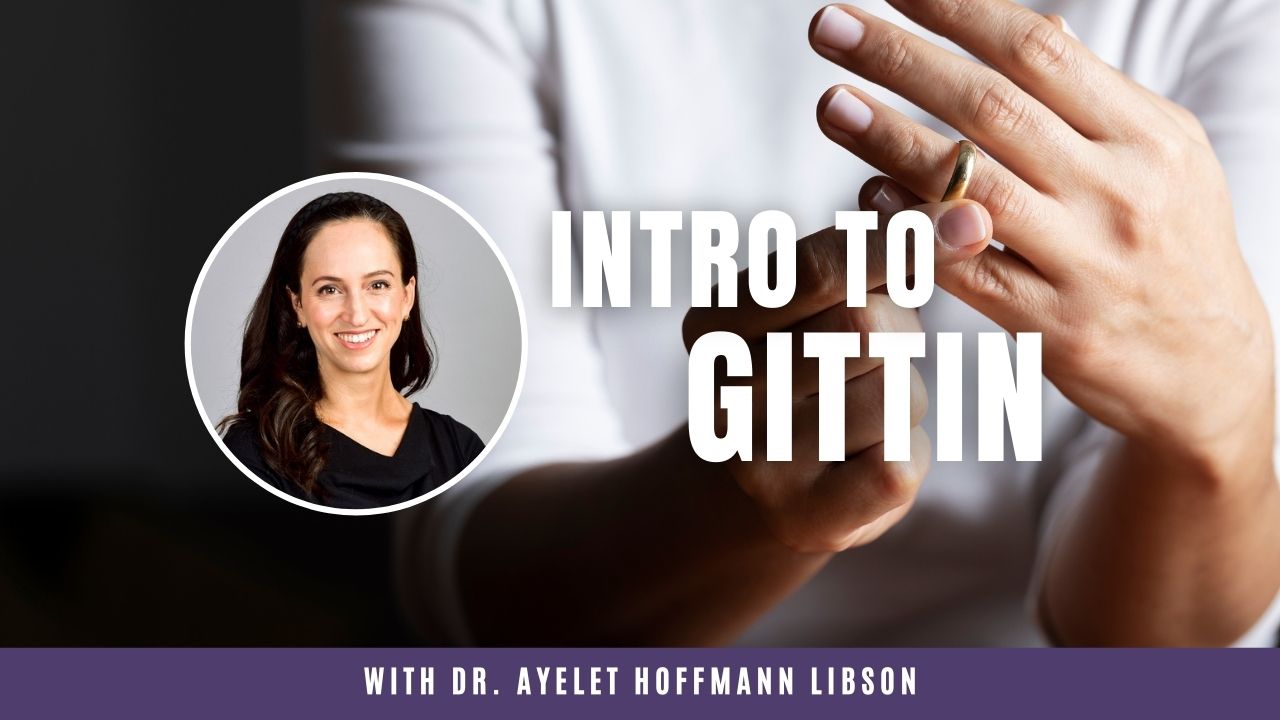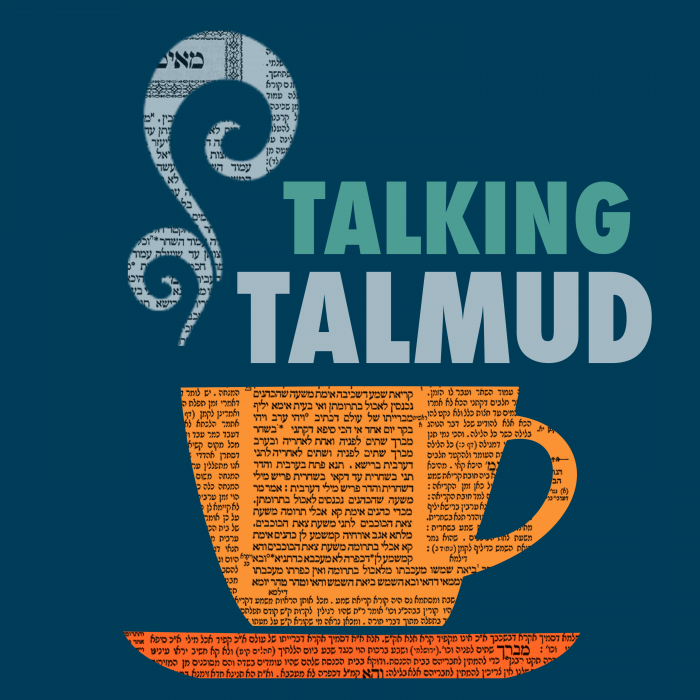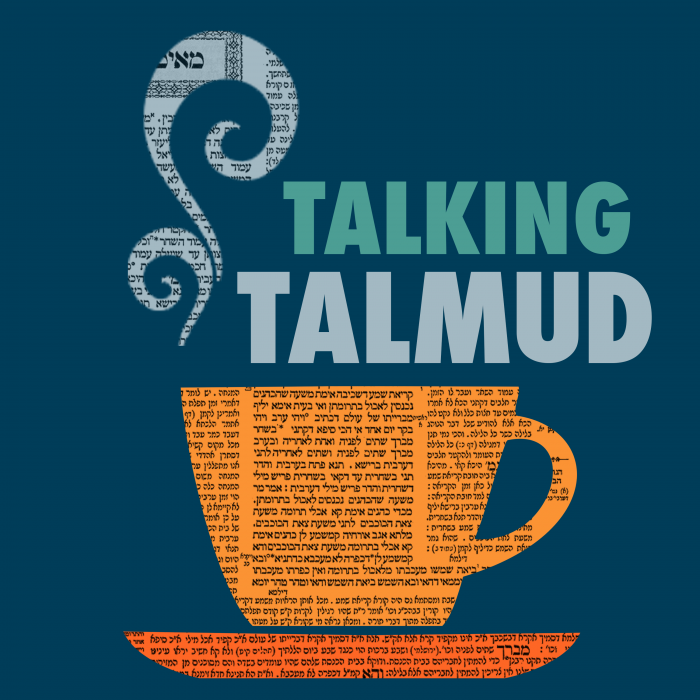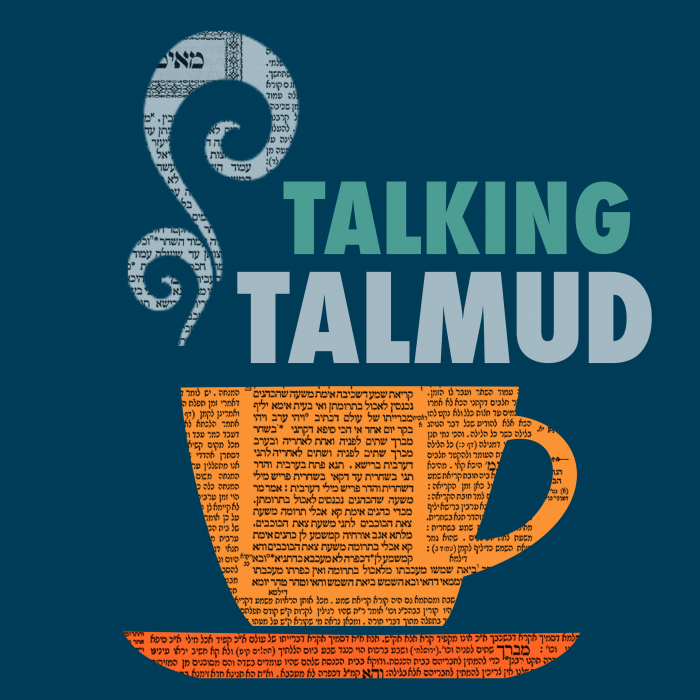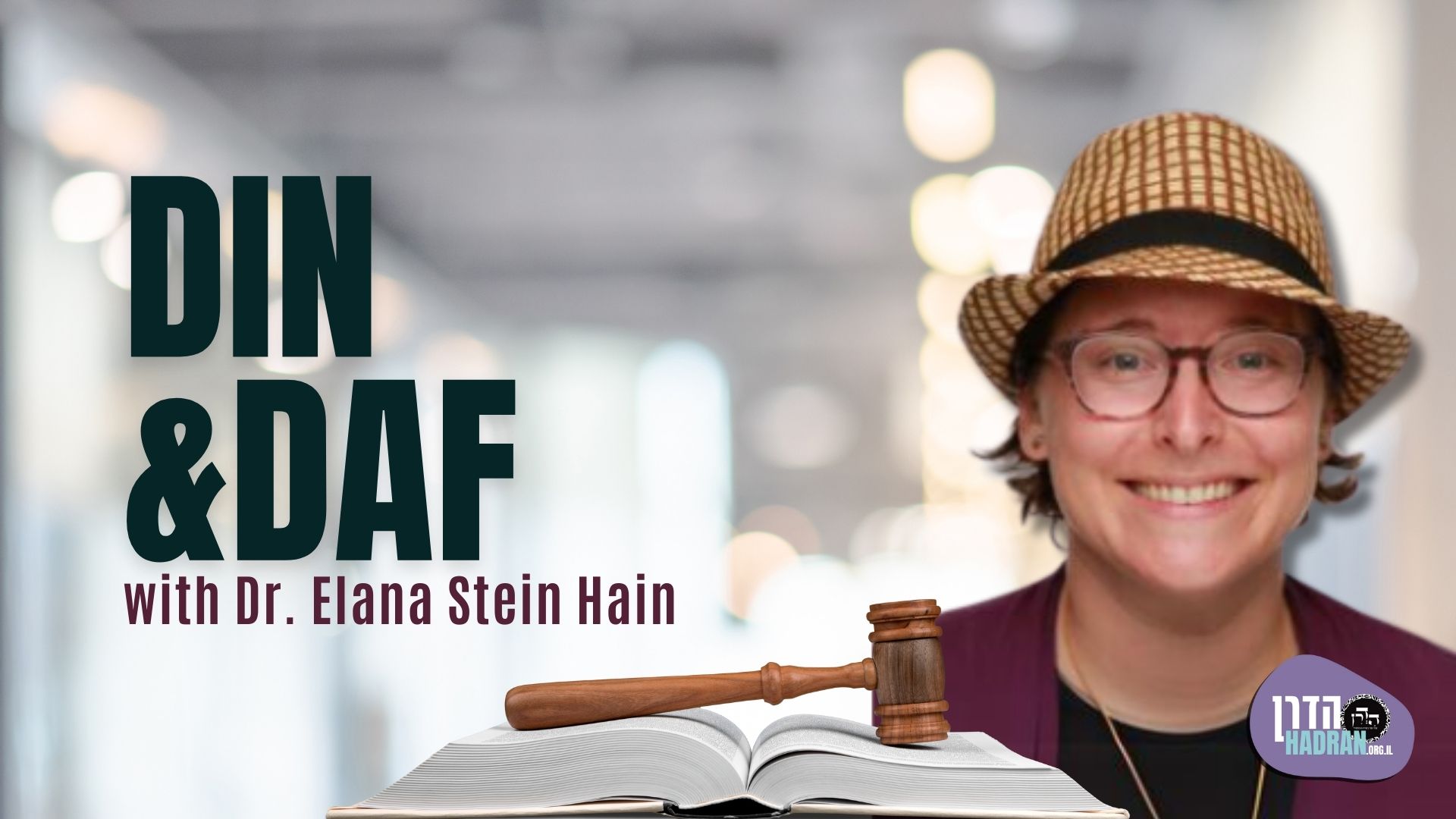The mishna states that having white without techelet or techelet without white does not disqualify the tzitzit. Alternative explanations are brought in order to explain this mishna even according to Rebbi who holds that both are necessary. Other issues relating to tzitzit are discussed.
This week’s learning is sponsored by Robert and Paula Cohen in loving memory of Joseph Cohen, Yosef ben Moshe HaCohen, z”l. “He was hard working, loved to sing, esp. as a chazan, and was very dedicated to his family and community.”
Want to dedicate learning? Get started here:

Today’s daily daf tools:
This week’s learning is sponsored by Robert and Paula Cohen in loving memory of Joseph Cohen, Yosef ben Moshe HaCohen, z”l. “He was hard working, loved to sing, esp. as a chazan, and was very dedicated to his family and community.”
Today’s daily daf tools:
Delve Deeper
Broaden your understanding of the topics on this daf with classes and podcasts from top women Talmud scholars.
New to Talmud?
Check out our resources designed to help you navigate a page of Talmud – and study at the pace, level and style that fits you.
The Hadran Women’s Tapestry
Meet the diverse women learning Gemara at Hadran and hear their stories.
Menachot 38
בְּלָאו דְּ״לֹא תָסוּר״.
He stated this with regard to the prohibition of: “You shall not deviate to the left or the right of that which they tell you” (Deuteronomy 17:11). A prohibition by rabbinic law is overridden by human dignity, but not a prohibition by Torah law. Therefore, Mar bar Rav Ashi would have removed his garment had he known about the tear.
וְאִיכָּא דְּאָמְרִי מֵהָתָם אֲמַר לֵיהּ, וַאֲמַר לֵיהּ: מַאי דַּעְתָּיךְ לְמִישְׁדְּיֵיהּ? וְהָאָמַר מָר: גָּדוֹל כְּבוֹד הַבְרִיּוֹת שֶׁדּוֹחֶה אֶת לֹא תַעֲשֶׂה שֶׁבַּתּוֹרָה! וְהָא תַּרְגְּומַהּ רַב בַּר שְׁבָא קַמֵּיהּ דְּרַב כָּהֲנָא בְּלָאו דְּ״לֹא תָסוּר״, הָכָא נָמֵי כַּרְמְלִית דְּרַבָּנַן הִיא.
And there are those who say there is a different version of this discussion: It was when they were there, in the place where the corner of Mar bar Rav Ashi’s garment tore, that Ravina said to him that it had torn, and Mar bar Rav Ashi said to him in response: What is your opinion? Do you think that I should throw the garment off? But doesn’t the Master say: Great is human dignity, as it overrides a prohibition in the Torah? The Gemara raises a difficulty: But Rav bar Shabba interpreted that statement before Rav Kahana: He stated this with regard to the prohibition of: “You shall not deviate,” not the prohibition against carrying in the public domain, which applies by Torah law. The Gemara answers that here too, it is not a prohibition by Torah law, as the place where they were walking was not a full-fledged public domain but a karmelit, in which carrying is prohibited by rabbinic law.
הֲדַרַן עֲלָךְ הַקּוֹמֵץ.
מַתְנִי׳ הַתְּכֵלֶת אֵינָהּ מְעַכֶּבֶת אֶת הַלָּבָן, וְהַלָּבָן אֵינוֹ מְעַכֵּב אֶת הַתְּכֵלֶת. תְּפִלָּה שֶׁל יָד אֵינָהּ מְעַכֶּבֶת אֶת שֶׁל רֹאשׁ, וְשֶׁל רֹאשׁ אֵינָהּ מְעַכֶּבֶת אֶת שֶׁל יָד.
MISHNA: The absence of the sky-blue [tekhelet] strings does not prevent fulfillment of the mitzva of ritual fringes with the white strings, and the absence of white strings does not prevent fulfillment of the mitzva with the sky-blue strings. If one has only one, he wears it without the other. Absence of the phylacteries of the arm does not prevent fulfillment of the mitzva of the phylacteries of the head, and absence of the phylacteries of the head does not prevent fulfillment of the mitzva of the phylacteries of the arm. If one has only one, he dons it without the other.
גְּמָ׳ לֵימָא מַתְנִיתִין דְּלָא כְּרַבִּי, דְּתַנְיָא: ״וּרְאִיתֶם אֹתוֹ״ – מְלַמֵּד שֶׁמְּעַכְּבִין זֶה אֶת זֶה, דִּבְרֵי רַבִּי, וַחֲכָמִים אוֹמְרִים: אֵין מְעַכְּבִין.
GEMARA: The Gemara suggests: Let us say that the mishna is not in accordance with the opinion of Rabbi Yehuda HaNasi. As it is taught in a baraita: When the verse requires one to place white and sky-blue strings upon the corners of his garments and then states: “That you may look upon it” (Numbers 15:39), it teaches that the lack of either one prevents fulfillment of the mitzva with the other; this is the statement of Rabbi Yehuda HaNasi. But the Rabbis say: The lack of one does not prevent the fulfillment of the mitzva with the other.
מַאי טַעְמָא דְּרַבִּי? דִּכְתִיב ״הַכָּנָף״ – מִין כָּנָף, וּכְתִיב ״פְּתִיל תְּכֵלֶת״, וְאָמַר רַחֲמָנָא ״וּרְאִיתֶם אוֹתוֹ״ – עַד דְּאִיכָּא תַּרְוַיְיהוּ בְּחַד.
The Gemara inquires: What is the reasoning of Rabbi Yehuda HaNasi, i.e., how does he derive his ruling from this verse? The Gemara explains: As it is written: “And they shall put on the fringe of the corner a sky-blue thread” (Numbers 15:38). “The fringe of the corner” is a reference to strings that are of the same type as the corner of the garment. Since garments are usually white, this phrase is referring to white strings. And it is written in this same verse: “A sky-blue thread.” And the Merciful One states in the following verse, referring to both types of strings: “And it shall be to you for a fringe that you may look upon it” (Numbers 15:39), in the singular. This teaches that one does not fulfill his obligation until both types are present together.
וְרַבָּנַן, ״וּרְאִיתֶם אוֹתוֹ״ – כֹּל חַד לְחוֹדֵיהּ מַשְׁמַע.
The Gemara asks: And how do the Rabbis, who hold that the one can fulfill one obligation without the other, understand this verse? The Gemara answers: They hold that the phrase “that you may look upon it” indicates that one fulfills a mitzva with each one individually.
לֵימָא דְּלָא כְּרַבִּי? אָמַר רַב יְהוּדָה אָמַר רַב: אֲפִילּוּ תֵּימָא רַבִּי, לֹא נִצְרְכָא אֶלָּא לְקַדֵּם.
The Gemara concludes its initial suggestion: Shall we say that the mishna, which states that one can fulfill the mitzva with either white or sky-blue strings even in the absence of the other, is not in accordance with the opinion of Rabbi Yehuda HaNasi? The Gemara responds: Rav Yehuda said that Rav said: You may even say that the mishna is in accordance with the opinion of Rabbi Yehuda HaNasi, and the ruling of the mishna is necessary only with regard to granting precedence. The white strings should precede the blue strings, but if the order is reversed, one still fulfills the mitzva.
דְּתַנְיָא: מִצְוָה לְהַקְדִּים לָבָן לַתְּכֵלֶת, וְאִם הִקְדִּים תְּכֵלֶת לַלָּבָן – יָצָא, אֶלָּא שֶׁחִיסֵּר מִצְוָה. מַאי חִיסֵּר מִצְוָה?
This is as it is taught in a baraita: It is a mitzva to insert the white strings into the garment before inserting the sky-blue strings, but if one inserted the sky-blue strings before the white strings, he fulfilled his obligation but omitted the mitzva. The Gemara asks: What does the baraita mean by the phrase: Omitted the mitzva?
אִילֵּימָא חִיסֵּר מִצְוָה דְּלָבָן וְקִיֵּים מִצְוָה דִּתְכֵלֶת – לְרַבִּי עַכּוֹבֵי מְעַכֵּב אַהֲדָדֵי.
If we say that the individual omitted the mitzva of white strings and fulfilled only the mitzva of sky-blue strings, how is this possible? According to the opinion of Rabbi Yehuda HaNasi, the absence of either one prevents fulfillment of the mitzva with the other, and therefore in this case one would not fulfill any mitzva at all.
אָמַר רַב יְהוּדָה אָמַר רַב: שֶׁחִיסֵּר מִצְוָה וְעָשָׂה מִצְוָה, וּמַאי חִיסֵּר מִצְוָה? דְּלָא עֲבַד מִצְוָה מִן הַמּוּבְחָר.
The Gemara answers that Rav Yehuda said that Rav said: It means that he omitted a mitzva but nevertheless performed a mitzva. And what does it mean that he omitted a mitzva? It means that he did not perform the mitzva in the optimal manner because he did not insert the white strings first, but he did fulfill the mitzva of ritual fringes.
הָתִינַח לָבָן דְּאֵינוֹ מְעַכֵּב אֶת הַתְּכֵלֶת, תְּכֵלֶת דְּאֵינָהּ מְעַכֶּבֶת אֶת הַלָּבָן – מַאי הִיא?
The Gemara asks: This works out well with regard to the mishna’s statement that absence of the white strings does not prevent fulfillment of the mitzva with the sky-blue strings, which has been interpreted to mean that failing to insert the white strings before the sky-blue strings does not invalidate the ritual fringes. But what is the meaning of the mishna’s statement that the absence of sky-blue strings does not prevent fulfillment of the mitzva with the white strings?
אָמַר רָמֵי בַּר חָמָא: לֹא נִצְרְכָא אֶלָּא לְטַלִּית שֶׁכּוּלָּהּ תְּכֵלֶת.
Rami bar Ḥama said: That statement of the mishna is necessary only in the case of a garment that consists entirely of sky-blue wool. In such a case, one is supposed to insert the sky-blue strings before the white strings.
אִיתְּמַר נָמֵי: אֲמַר לֵיהּ לֵוִי לִשְׁמוּאֵל: אַרְיוֹךְ, לָא תִּיתֵּיב אַכַּרְעָךְ עַד דִּמְפָרְשַׁתְּ לִי לְהָא מִילְּתָא: הַתְּכֵלֶת אֵינָהּ מְעַכֶּבֶת אֶת הַלָּבָן, וְהַלָּבָן אֵינוֹ מְעַכֵּב אֶת הַתְּכֵלֶת – מַאי הִיא? אֲמַר לֵיהּ: לֹא נִצְרְכָא אֶלָּא לְסָדִין בְּצִיצִית, דְּמִצְוָה לְאַקְדּוֹמֵי לָבָן בְּרֵישָׁא.
The Gemara notes that this was also stated by amora’im: Levi said to Shmuel: Aryokh, do not sit on your feet until you explain to me this matter: When the mishna states that the absence of the sky-blue strings does not prevent fulfillment of the mitzva of ritual fringes with the white strings, and the absence of white strings does not prevent fulfillment of the mitzva with the sky-blue strings, what does it mean? Shmuel said to Levi: That statement is necessary only in the case of a linen cloak on which one places ritual fringes, where there is a mitzva to insert the white strings first.
מַאי טַעְמָא? ״הַכָּנָף״ – מִין כָּנָף, וְאִי אַקְדֵּים תְּכֵלֶת לְלָבָן – לֵית לַן בַּהּ.
What is the reason for this? The verse states: “And they shall put on the fringe of the corner a sky-blue thread” (Numbers 15:38). “The fringe of the corner” is a reference to the string that is the same type as the corner of the garment. In the case of a linen cloak, which is generally white, this is a reference to the white strings, and since the verse mentions “the fringe of the corner” before the sky-blue thread, the white strings must be inserted before the sky-blue strings. The mishna therefore teaches that if one inserted the sky-blue strings before the white strings, we have no problem with it after the fact, and the ritual fringes are valid.
תִּינַח לָבָן דְּאֵינוֹ מְעַכֵּב אֶת הַתְּכֵלֶת, תְּכֵלֶת דְּאֵינָהּ מְעַכֶּבֶת אֶת הַלָּבָן מַאי הִיא?
The Gemara asks: This works out well with regard to the mishna’s statement that absence of the white strings does not prevent fulfillment of the mitzva with the sky-blue strings. But what is the meaning of the mishna’s statement that the absence of sky-blue strings does not prevent fulfillment of the mitzva with the white strings?
אֲמַר לֵיהּ רָמֵי בַּר חָמָא: לֹא נִצְרְכָא אֶלָּא לְטַלִּית שֶׁכּוּלָּהּ תְּכֵלֶת, דְּמִצְוָה לְאַקְדּוֹמֵי תְּכֵלֶת בְּרֵישָׁא, דְּ״הַכָּנָף״ – מִין כָּנָף, וְאִי אַקְדֵּים לָבָן בְּרֵישָׁא לֵית לַן בַּהּ.
Rami bar Ḥama said to him: That statement of the mishna is necessary only in the case of a garment that consists entirely of sky-blue wool, where it is a mitzva to insert the sky-blue strings first, as the phrase: “The fringe of the corner” indicates that the first strings one inserts into the garment are those that are the same type as the corner of the garment. The mishna therefore teaches that if one inserted the white strings first, we have no problem with it after the fact, and the ritual fringes are fit.
אָמַר רָבָא: מִידֵּי צִיבְעָא קָא גָרֵים? אֶלָּא אָמַר רָבָא: לֹא נִצְרְכָא אֶלָּא לְגַרְדּוּמִּין, דְּאִי אִיגַּרְדַּם תְּכֵלֶת וְקָאֵי לָבָן, וְאִי אִיגַּרְדַּם לָבָן וְקָאֵי תְּכֵלֶת – לֵית לַן בַּהּ.
Rava said: Is it actually the color of the garment that determines the proper order in which one should insert the strings? Rather, Rava said: The ruling of the mishna is necessary only for a case of severed strings. The mishna teaches that if the sky-blue strings were severed and the white ones remain, or if the white strings were severed and the sky-blue strings remain, we have no problem with it, and the ritual fringes are fit.
דְּאָמְרִי בְּנֵי רַבִּי חִיָּיא: גַּרְדּוּמֵּי תְּכֵלֶת כְּשֵׁרִין, וְגַרְדּוּמֵּי אֵזוֹב כְּשֵׁרִין. וְכַמָּה שִׁיעוּר גַּרְדּוּמִּין? אָמַר בַּר הַמְדּוּרֵי אָמַר שְׁמוּאֵל: כְּדֵי לְעׇנְבָן.
As the sons of Rabbi Ḥiyya say: Severed white or sky-blue strings are fit, and similarly, severed hyssop branches are fit for sprinkling the water of purification mixed with the ashes of a red heifer. The Gemara asks: What measure do severed strings need to be in order to remain fit? Bar Hamduri says that Shmuel says: The strings must remain long enough to tie them in a slipknot.
אִיבַּעְיָא לְהוּ: כְּדֵי לְעׇנְבָן – לְעׇנְבָן כּוּלְּהוּ בַּהֲדָדֵי, אוֹ דִלְמָא כֹּל חַד וְחַד לְחוֹדֵיהּ? תֵּיקוּ.
A dilemma was raised before the Sages: When Shmuel says that severed strings must still be long enough to tie them in a slipknot, does that mean to tie all of the strings together in a slipknot? Or perhaps the strings may be even shorter, provided that they are long enough to tie each one individually. The Gemara concludes: The dilemma shall stand unresolved.
בָּעֵי רַב אָשֵׁי: אַלִּימֵי דְּלָא מִיעַנְבִי, וְאִי הֲווֹ קַטִּינֵי מִיעַנְבִי, מַאי? אֲמַר לֵיהּ רַב אַחָא בְּרֵיהּ דְּרָבָא לְרַב אָשֵׁי: כׇּל שֶׁכֵּן דְּמִינְּכַר מִצְוָתַיְיהוּ.
Rav Ashi asks: If the strings are thick and cannot be tied in a slipknot, but if they were the same length but thin they could be tied in a slipknot, what is their status? Rav Aḥa, son of Rava, said to Rav Ashi: If the strings are long enough to be fit if they are thin, all the more so they are fit if they are thick, as the mitzva one fulfills with them is more recognizable with thicker strings.
וּמַאן תַּנָּא דִּפְלִיג עֲלֵיהּ דְּרַבִּי? הַאי תַּנָּא הוּא, דְּתַנְיָא: רַבִּי יִצְחָק אוֹמֵר מִשּׁוּם רַבִּי נָתָן, שֶׁאָמַר מִשּׁוּם רַבִּי יוֹסֵי הַגְּלִילִי, שֶׁאָמַר מִשּׁוּם רַבִּי יוֹחָנָן בֶּן נוּרִי: אֵין לוֹ תְּכֵלֶת – מֵטִיל לָבָן.
The Gemara cited the opinion of Rabbi Yehuda HaNasi, who holds that one cannot fulfill the mitzva of ritual fringes without both white and sky-blue strings, and the Gemara explained that the mishna can be interpreted in accordance with his opinion. The Gemara now asks: Who is the tanna who disagrees with Rabbi Yehuda HaNasi and holds that the sky-blue strings and the white strings are not interdependent? The Gemara answers: It is this following tanna, as it is taught in a baraita: Rabbi Yitzḥak says in the name of Rabbi Natan, who said in the name of Rabbi Yosei HaGelili, who said in the name of Rabbi Yoḥanan ben Nuri: If one does not have sky-blue strings, he nevertheless affixes white strings.
אָמַר רָבָא: שְׁמַע מִינַּהּ, צָרִיךְ לִקְשׁוֹר עַל כׇּל חוּלְיָא וְחוּלְיָא, דְּאִי סָלְקָא דַעְתָּךְ לֹא צָרִיךְ – הָא דְּאָמְרִי בְּנֵי רַבִּי חִיָּיא: גַּרְדּוּמֵּי תְכֵלֶת כְּשֵׁרִין וְגַרְדּוּמֵּי אֵזוֹב כְּשֵׁרִין, כֵּיוָן דְּאִישְׁתְּרִי לֵיהּ עִילַּאי אִישְׁתְּרִי לֵיהּ כּוּלֵּהּ.
Rava said: Learn from the sons of Rabbi Ḥiyya that one is required to tie a knot after each and every set of windings, and one cannot suffice with only one knot at the end of all the windings. As, if it enters your mind to say that one is not required to tie a knot after each set of windings, then that which the sons of Rabbi Ḥiyya say: Severed white or sky-blue strings are fit, and similarly, severed hyssop branches are fit, is difficult: Once the uppermost knot is undone, all of the windings on the entire corner will come undone, as there are no other knots holding the windings in place, and in that case the garment will not have valid ritual fringes.



